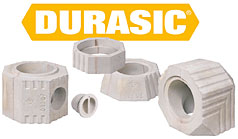Radiant Heating with a Masonry stove
With masonry heater most of the heat is transferred to the living area by radiation rather than convection. Instead of heating the air directly the radiation from the stove passes through the air in the room, and warms all of the solid surfaces in the room that it "shines" on. In effect, the Heater becomes a miniature "sun" in your living area, warming those surfaces evenly to, for example, 75 F degrees (24 C).
When you stand in the sun, you feel radiant heat. Is it simply warm air that is reaching you or is it something more like radioactive radiation?
Heat is a form of energy resulting from the motion between particles of matter. If particles of matter are absolutely still their temperature will measure absolute zero. Temperature measures the intensity of heat but also is related to the degree of motion between particles of matter. Anybody who has ever rubbed their hands together until they are warm has experienced how the energy of movement can be converted into heat energy. It is the increased particle movement caused by friction that produces this heat sensation.
The law of thermal equilibrium is a nice example of how, in nature, everything is evenly distributed. Nothing is allowed to retain heat energy for itself without limit. Everything stands in relationship to everything else; heat is constantly being exchanged in an endless circle in search of thermal equilibrium. Liquids and gases exchange heat chiefly by means of convection, while solids exchange heat by means of radiation and - when there is direct contact - by means of conduction. Conduction occurs when a warm object is held against a colder object. Vibration of particles on the contact surface of the warm object transfers to the particles on the contact surface of the cold object. These in turn make the deeper-lying particles of the colder object vibrate. The vibrations move like a wave through the cooler object as it warms up. The vibrations (heat energy) on a very hot object can be painful to the touch. The result is a burn. The transfer of heat through radiation is more difficult to understand. All matter with a temperature higher than absolute zero gives off heat in the form of infrared radiation.
Quantum mechanics explains this radiation as a stream of separate photons, which have characteristics of both particles and waves. It can be rather frightening to think that the radiation (infrared light) falling on our body, whether from the sun or from another source of light, consists of countless tiny particles being shot off at enormous speed. Fortunately these photons are so small that even scientists are not sure whether they are particles or just pure energy. They are probably both at the same time, or something that is alternating between the two at an enormous speed. In any case, photons behave at one moment like particles, and at another moment like waves of energy. When these photon "particles" collide with other particles of matter they cause increased particle movement, which in turn result in an increase in temperature.
Because the particles in solids and liquids are relatively closely packed together they are very good at absorbing any radiant heat photons that happen to strike them. On the other hand, gases, such as the air we breathe, have enormous amounts of empty space between particles. As a result, the chance of photons hitting a gas particle is much smaller. The distance that a photon can travel through gas before striking a molecule is dependant on the amplitude of its wave motion. This amplitude will be greater (higher) in radiation from a hot object than in a cooler object.
The greater the amplitude, the longer the path a photon "particle" will follow in order to cover a given distance through the gas and the greater the probability of encountering a gas molecule along that path. This is why a warm Masonry heater at 100 - 200 degrees F. will radiate heat a much greater distance than a hot metal stove at 400 - 600 degrees F.
This is why a Masonry heater will shine through the air warming the surfaces of a room through direct radiation as opposed to a hot metal stove which heats the room air directly setting in motion convective air currents. Convection is heat transfer by means of a flow, caused by differences in density that result
from differences in air temperature. Cold air particles have less movement, are packed closer together and have more weight per unit of volume than warm air particles. Convection is simply a word for the phenomenon that warm air raises and cold air sinks, a phenomenon that enables man to suspend himself in the atmosphere by means of a hot-air balloon. Heating through convection heating is air heating. Put warm air in the bottom of a room and it will automatically rise. As it circulates in this way, its heat will be transferred as contact is made with cooler surfaces in the room. The heat will also dissipate as the warmer air particles simply mix with cooler air particles with result that the average air temperature in the room will raise and the temperature of the warm air circulated by convection will fall. Convective heat is an indirect form of heat transfer. The heat is not transferred directly, but rather indirectly through the medium of the air in the room which acts as the means of transport. The continual movement of air in a room heated by convection from a hot metal stove or a forced air system results in uncomfortable drafty conditions and uneven temperature zones. By contrast, in a room heated with a radiant Masonry heater the air remains still, eliminating uncomfortable drafts, with air temperature staying comfortably even.










